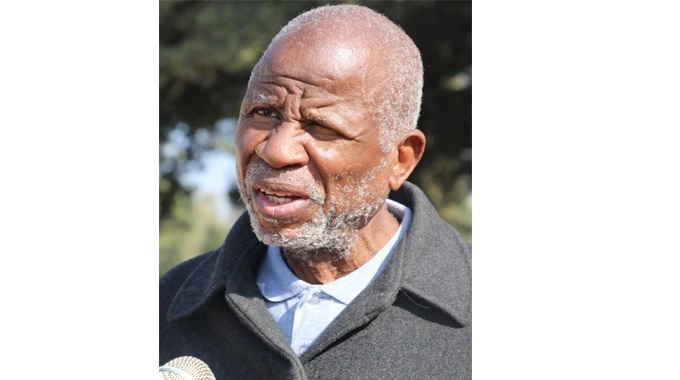
The Sunday News

Rutendo Nyeve, Sunday News Reporter
THE Matabeleland region will need an estimated 350 years to double its population which has been on a slow growth rate mainly due to low fertility rate, cultural practices and migration, among a number of factors.
Population and cultural experts noted that the region is way behind in terms of population growth as validated by the preliminary 2022 census results released by the Zimbabwe National Statistics Agency last week.

Image taken from Shutterstock
According to the preliminary results, Bulawayo recorded the lowest annual growth rate (0.2 percent), with a population of 665 940 slightly up from the 2012 figure of 653 337. Zimbabwe’s population grew by 16,2 percent from 13 061 239 in 2012 to 15 178979 in 2022 with an annual growth rate of 1,5 percent.
The distribution of the population by province for the year 2022 indicates that Harare constituted 16 percent of the total population, followed by Manicaland and Mashonaland West with 13,4 and 12,5 percent while Bulawayo, Matabeleland North and South provinces constituted a mere 4,4, 5,5 and five percent respectively.
Demographic experts attributed the lower growth rates and ultimately the lower population to migration, lower fertility and geographical size, among other factors. Renowned global, regional and national demographer who is also the founder of the Demography Teaching and Department of Population Studies at the University of Zimbabwe Professor Marvellous Mhloyi attributed the low population to geographical size, lower fertility and migration factors.
“Matabeleland is proportionately smaller than other provinces. However, what is important is not necessarily the geographical size per se, but rather the demographic characteristics of the province. First, Matabeleland has been having the lowest fertility levels, even before the fertility decline in the country. The low fertility levels are partly explained by maternal cultural practices of child spacing and breastfeeding. In addition, Matabeleland has been having a history of male emigration to Botswana and South Africa. The out-migration of males left women without their husbands; this made it possible to space children for longer durations, with consequently lower fertility. As a result of lower fertility, the province has not had as young an age distribution as other provinces,” she said.
Prof Mhloyi said as a result the region has had fewer child bearers and consequently a lower population momentum built within its age structure.
“Take for example a family X with an average fertility of six girl children, and another family, Y, with an average fertility of four girl children. If these two families were to reduce their fertility by a similar 50 percent each, in the next generation, family X will give birth to 18 children, (i.e 6×3) and family Y will have a total of 8 children (4×2). At the same fertility rates, in the next generation family X will have 54 (18×3) new children while family Y will have only 16 (8×2) new births. Roughly family X represents other provinces in Zimbabwe, while family Y represents Matabeleland. Note that the rate of population growth, which is a function of fertility and migration, was only two percent for Matabeleland while it was 1,5 percent for the country. This means that while it will take roughly about 46,7 years for the Zimbabwean population to double, it will take about 350 years for the population of Matabeleland to double,” said Prof Mhloyi.
She added that in reality the population of Matabeleland was nearing a stationary stage where the rate of population growth will be zero. Demographics lecturer at Lupane State University Mr Madodana Sithole said the population results were a validation of a trend that has been observed over the years.

Lupane State University
“Firstly we have to appreciate that the region of interest has always accounted for a small proportion of the Zimbabwean population compared to the Mashonaland provinces. Look at the 2012 census for example. The population of Harare was around 2.1 million while that of Bulawayo was around 700 000. You can make a similar comparison between Matabeleland North and Manicaland for example and the margins have always been high. What we have seen of the 2022 preliminary results is a continuation of a trend that has been set over a long period of time,” he said.
Mr Sithole said while the population of Bulawayo has been almost stagnant, that of Harare has increased by nearly half a million since the last census. This, he added, alludes to the fact that any population will inevitably change as a result of natural increase, decrease or migration.
“Natural population increase basically looks at the difference between births and deaths. This differential has not done any good for the Bulawayo population and the western region in general. Basically people are becoming more conservative when it comes to child bearing especially within the context of an economy offering limited opportunities for households to make a living. Migration as an important variable of population change has boosted the population of Harare compared to that of Bulawayo. This is because of the magnetic pool that the capital has, tapping from highly populated provinces like Manicaland, Mashonaland Central and the like. Bulawayo has limited opportunities that can attract migrants on a significant scale,” said Mr Sithole.
Mr Sithole said the slow population growth in the southern region might result in labour shortage while resources might be channelled to the other provinces. The Government and other stakeholders use such official data to plan for distribution of resources and social safety nets, among other policy interventions
“The implications are far reaching with labour shortages especially in rural areas. The fact that the young have either migrated out of the country into South Africa or Botswana or they are not being born means household labour will be in short supply,” he said.
Mr Sithole added that the signs are already telling as the region has seen an increase in hired labour.
“Households that can’t afford this will have their productivity impacted significantly. Furthermore, one would appreciate that national resources will be directed and apportioned depending on the population of the area. It goes without saying therefore that regions with sluggish population growth will attract limited State intervention on certain issues.”

Mr Pathisa Nyathi
He said even non-State entities like non-governmental organisations will start directing resources depending on the population in the area. Historian and cultural expert Mr Pathisa Nyathi said migration played a huge role in the population growth recorded and it was not a new phenomenon.
“I think it is just history taking precedence. If we talk in ethnic terms, Matabeleland ethnic people composed of 20 percent of the country’s population hence it is just the maintenance of the same population. Migration is not new, it started long back but now it has increased phenomenally. My father migrated to South Africa in 1931 when mining boomed there. People from this region take advantage of language and we easily melt into the society of South Africa and Botswana where we mostly migrate to. As such I think our population grew and migrated in what I will call external growth. What is really new is the consciousness about our population,” said Mr Nyathi. – @nyeve14



